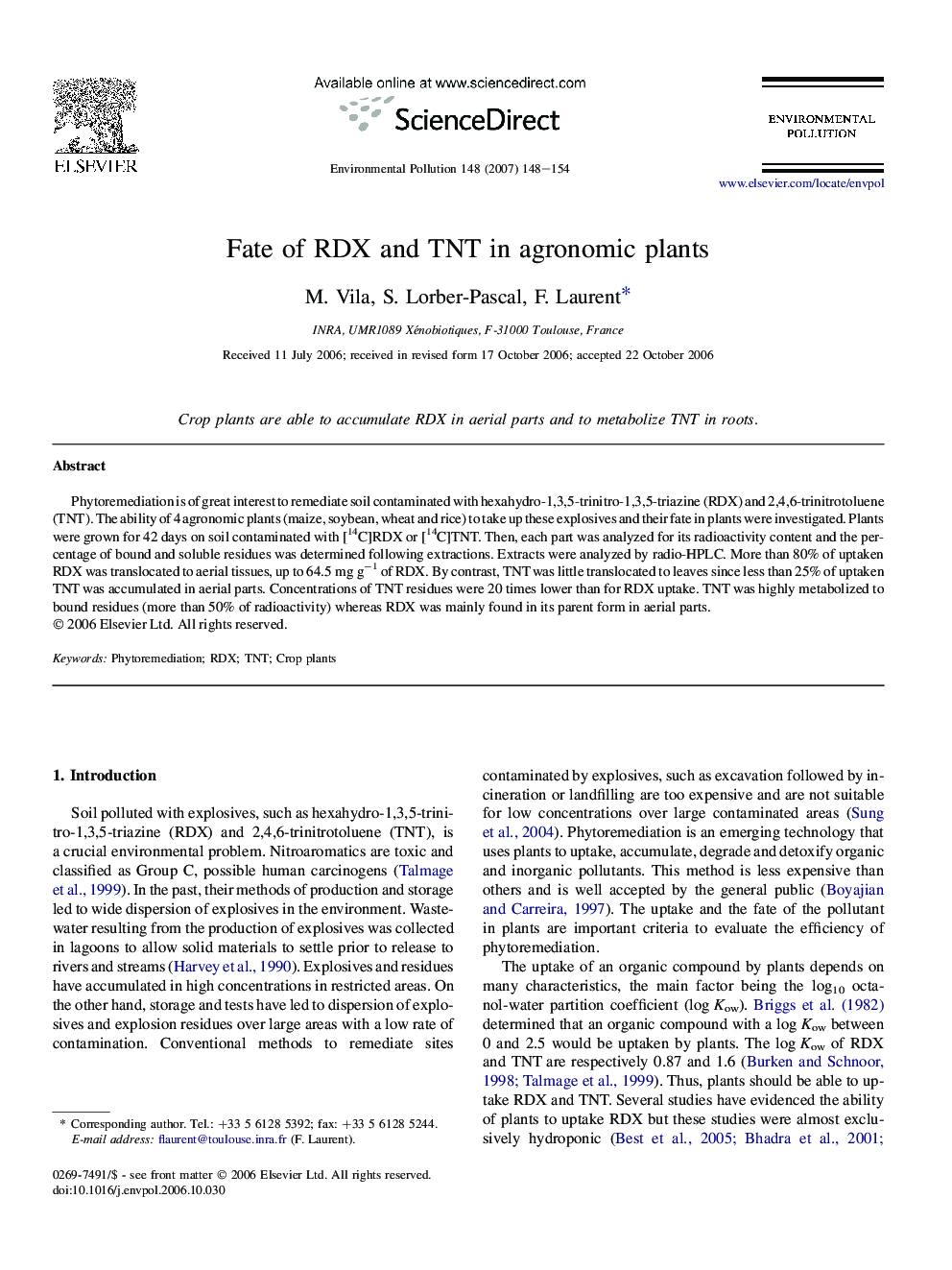| Article ID | Journal | Published Year | Pages | File Type |
|---|---|---|---|---|
| 4427571 | Environmental Pollution | 2007 | 7 Pages |
Phytoremediation is of great interest to remediate soil contaminated with hexahydro-1,3,5-trinitro-1,3,5-triazine (RDX) and 2,4,6-trinitrotoluene (TNT). The ability of 4 agronomic plants (maize, soybean, wheat and rice) to take up these explosives and their fate in plants were investigated. Plants were grown for 42 days on soil contaminated with [14C]RDX or [14C]TNT. Then, each part was analyzed for its radioactivity content and the percentage of bound and soluble residues was determined following extractions. Extracts were analyzed by radio-HPLC. More than 80% of uptaken RDX was translocated to aerial tissues, up to 64.5 mg g−1 of RDX. By contrast, TNT was little translocated to leaves since less than 25% of uptaken TNT was accumulated in aerial parts. Concentrations of TNT residues were 20 times lower than for RDX uptake. TNT was highly metabolized to bound residues (more than 50% of radioactivity) whereas RDX was mainly found in its parent form in aerial parts.
